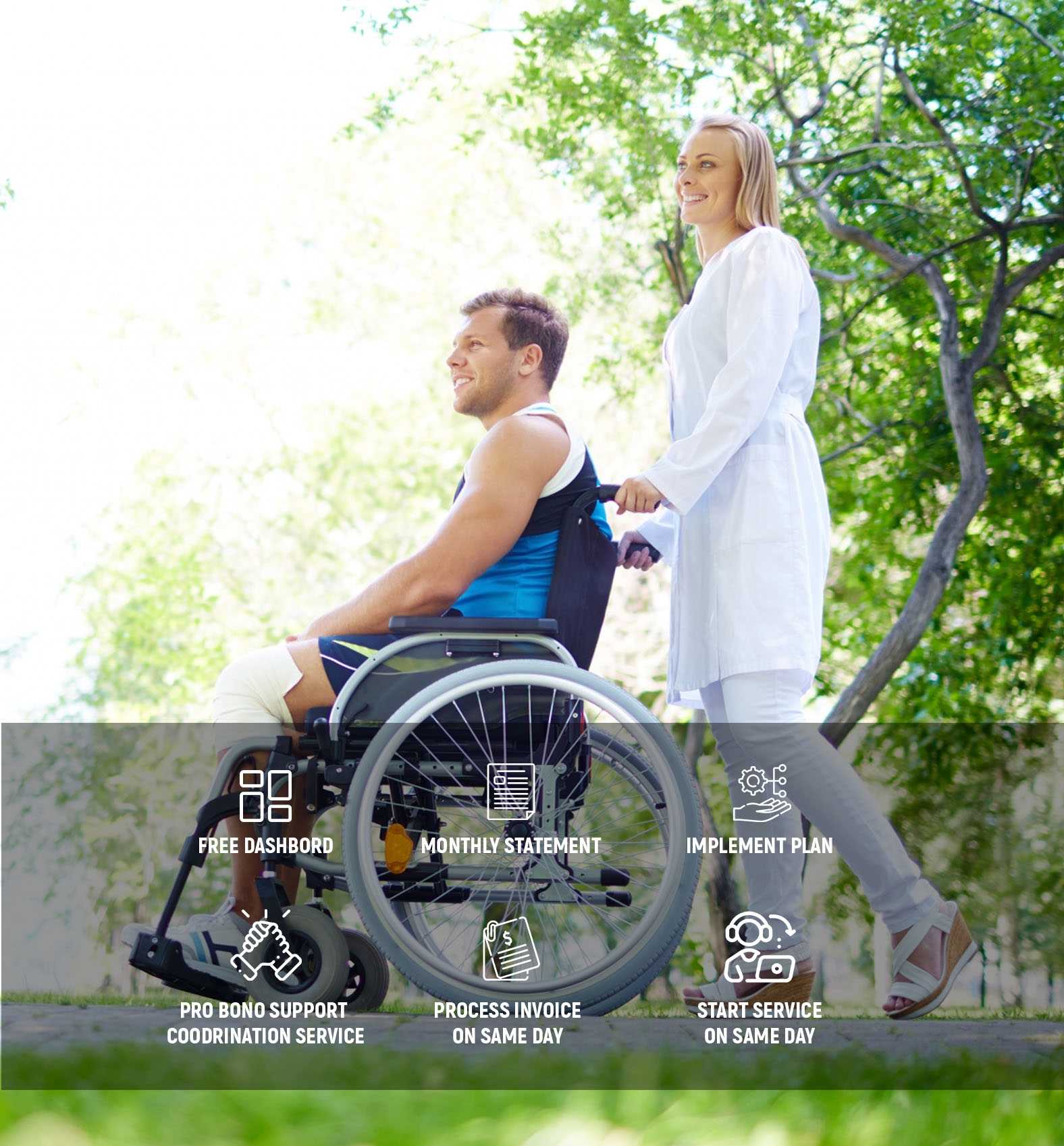Your Guide to NDIS Housing
Housing is one of the most fundamental human rights. No matter what your disability, you deserve to live independently and with dignity. In Australia, no one should feel trapped in their residence or unable to carry our everyday tasks because their living arrangement does not meet their needs. The National Disability Insurance Scheme provides housing options and support for people living with a disability to help them live more independently and improve their day-to-day quality of life. However, navigating the complex NDIS housing options can be a confusing and often frustrating experience for many people.
This page will outline the types of housing support the NDIS provides: Supported Independent Living (SIL), Specialist Disability Accommodation (SDA), Individual Living Options (ILO) and Short and Medium-Term accommodation solutions. This page will also detail scenarios funding these types of accommodation solutions occurs, who is eligible, and provide some tips for applying for each type of funding.
Reasonable and Necessary.
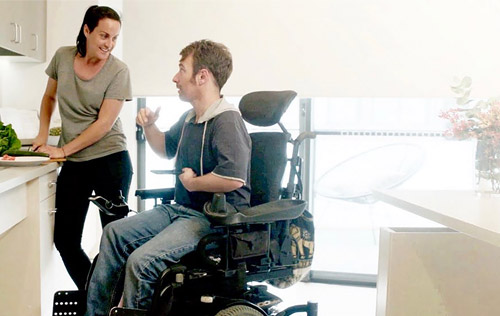
The National Disability Insurance Agency (NDIA) is the managing agency of the NDIS, and they outline that a reasonable and necessary funding request is funding that assists an NDIS participant with obtaining disability supports and services to achieve their desired outcomes. Regarding housing options, this means that if the participant requests a form of housing that is directly related to their disability and their NDIS goals and cannot be achieved through other support services, securing funding is more likely. The NDIS may also consider factors that are not directly related to participants’ disability but will help improve their quality of life when approving funding. Factors such as the proximity to established community organizations, churches, sports, schools, and friends and access to affordable housing and social housing may be considered.
Specialist Disability Housing (SDA)
What is Supported Independent Living?
Supported Independent Living funding is only available for a small group of people who live with a disability that inhibits their ability to live independently. SIL participants use a support person to help them with everyday life, including getting around, managing their medications, cooking, and paying bills. Many participants within the NDIS do receive funding for support services like support workers in their core support budgets. However, SIL funding is only provided for participants who may need a high level of in-home, round-the-clock care. Funding for SIL is often provided with the aim that the support person will provide training and avenues for the participant to build greater capacity to live more independently over time as part of an NDIS goal.

What Supported Independent Living will not fund
SIL provides funding to a select group of NDIS participants for support persons. It does not provide funding for items like wheelchairs, which are funded within the core supports budget and does not provide funding for home modifications, consumables, rent, or utility bills.
Who is likely to receive SIL funding?
Supported Independent Living is not for everyone, and only a small portion of NDIS participants will get SIL funding. There needs to be a significant impact on the person’s daily functioning to get SIL funding.
Things to consider when applying for SIL:
- Am I over 18? SIL is only available to people 18 or older
- Do I live alone or in a group? SIL is available for people who live independently but is far more common when participants are in a group home
- Is there a significant impact on my day-to-day functioning? The more assistance a participant requires, the more likely they will get SIL
- Do I have a functional impairment or a physical impairment?
- What type of level of SIL funding do I require?

There are three levels of SIL finding:
- Lower Needs – Does not require 24-hour care but requires supervision and assistance towards living arrangements
- Standard Needs – Requires 24-hour care and assistance or supervision of daily activities
- Higher Needs – Requires 24-hour care round the clock from a support person who specialises in complex care scenarios
How to apply for SIL funding?
As with most funding requests within the National Disability Insurance Scheme, participants can apply for SIL funding at planning meetings. Participants are urged to work with their local area coordinator (LAC), a support coordinator, and or their primary career to assess the participant’s potential need for SIL. If it’s decided that SIL may be right for you, your LAC can contact a SIL provider in your area, and they will work with you and your careers to develop a roster of care. A roster of care outlines the number of hours and support workers that you may require as part of SIL funding. The NDIA will make assessments of participant needs for SIL based on the level of care required, individual goals, the roster of care, and whether the SIL provider falls within NDIS price guide limits.

If accepted and your SIL funding approved by the NDIA, your SIL provider will begin delivering care and be able to claim the funds for the support they provide out of your NDIS budget.
Important things to note
- SIL is provided by third-party providers and not from the government or the NDIS
- Your SIL funding will be reviewed at each of your planning meetings
- Ask your support coordinator to check in on your SIL providers to ensure they are following procedure and attending to your requests
- A SIL provider is employed by the participant and can be changed if it is deemed necessary to do so
- A participant or a career should oversee a Roster of Care to ensure the participant’s interests are always being looked after
Specialist Disability Housing (SDA)
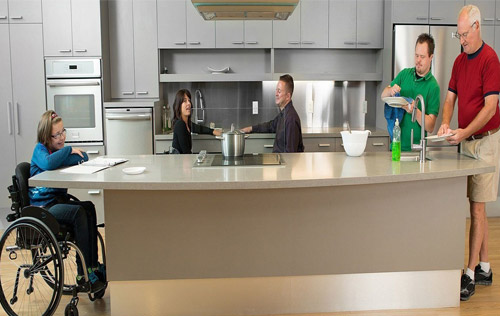
What is specialist disability housing?
Specialist Disability Housing or SDA is designed to be more accessible housing for people living with very high needs or severe functional disabilities. SDA homes are constructed or modified on the provision they meet the specific needs of residents, especially those with complex needs, including visual impairment, physical impairment, cognitive disability, hearing loss and mobility issues.
SDA can often mean National Disability Insurance Scheme participants share their homes with others with similar disabilities, but not always. SDA starts with the individual’s needs assessment, then works out how best to build something that suits them. The design will be based on individuals’ specific needs and preferences and on other people they share the home with if living in shared housing.
SDA funding covers the costs of building and modifications to homes but does not cover the costs of support staff or building management. SDA is for people with very high needs and severe functional disabilities. Some of these people may never be able to live independently and may require 24-hour care. SDA homes can be purpose-built to suit individuals, or they can be established homes that are modified to increase the everyday living ability of the house for people with significant disabilities. Things like ramps, extra-wide doorways, and hallways, sensors, accessible kitchens, and bathrooms are just some of the features SDA might have.
Who is eligible to receive funding for SDA?
SDA is not common to support given out by the NDIS. SDA is reserved for individuals who require a very high level of support to live with their disability and carry out day-to-day tasks.
The NDIS will be more likely to approve funding for participants if they:
- Have significant mobility issues, such as not being able to walk or needing a wheelchair.
- Have significant continence issues
- Need help with almost all of their daily activities
- Have sensory issues, such as visual impairment or hearing loss.
- Have a cognitive disability.
- Require specialist equipment to be accessed at home
- Have a severe intellectual disability
- Have a physical impairment
- Have major behavioral issues that significantly impact their quality of life or the quality of life of people around them
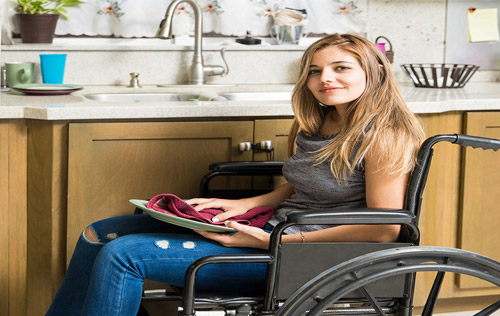
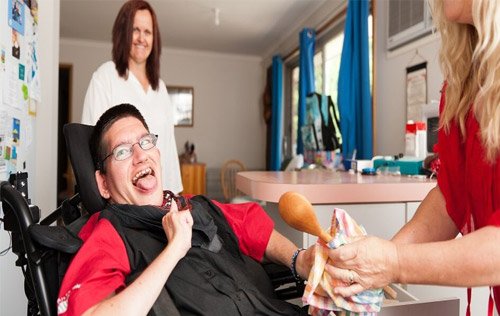
How to apply for SDA funding?
If you feel that your disability and current housing situation are negatively impacting your health, well-being, and day-to-day living, or if you feel it would be beneficial to move into a community living setting, talk to your local area coordinator or support coordinator about SDA. You can also contact your local NDIS coordinator or service provider for more information. If your LAC and support coordinator feel you may be eligible for SDA funding, you and your support team can begin investigating housing options that will work best for you. A Housing Plan will need to be written up and overseen by an occupational therapist or another healthcare professional who can help you work with your NDIS planners to determine the appropriate level of supports that will be offered with SDA funding.
You and your team must convince the NDIA that your requests are reasonable and necessary. The NDIS team will consider whether you can do activities without help at home and whether you will be able to get the assistance and equipment you need in your new home if it is outside of your current area and support network. It is important to understand that the NDIS does not pay for all your services with SDA funding but only the building or modifications. You may require extra funding that falls under Supported Independent Living or other core supports.
Important factors about SDA
- SDA is provided by third-party providers and is a relatively new service, and the supply of specialist disability accommodation is still lacking in many areas
- The NDIS will not cover the costs of support staff or management of an SDA home
- The NDIS does not provide all equipment you might need in your new home, such as accessible kitchens and bathrooms
- An SDA home may have less privacy than what you are used to
- It is not guaranteed that the NDIS will approve your application for SDA funding
Individualised Living Options
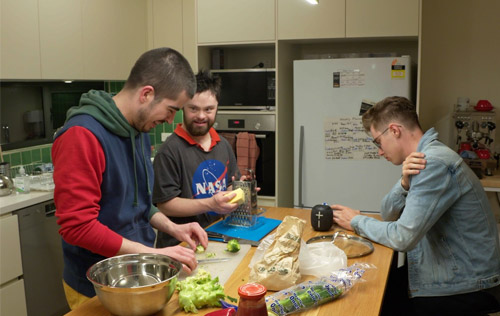
What are individualised living options?
An Individualized Living Option or ILO supports NDIS participants, empowering individuals who live with a disability to live a more independent life through customized housing solutions. An ILO lets NDIS participants choose how they want to live, whether living with family, friends, or housemates, or with a host. ILO is specifically designed to meet the needs of NDIS participants living with different disabilities through targeted support and housing solutions. Since the introduction of the NDIS, Individualized Living Options have had the potential to revolutionize the way people receive housing support. This is because ILO grants housing for people living with disabilities greater autonomy over their lives and home choices that were out of reach even a few years ago.
Who is eligible for ILO?
As with all NDIS funding requests, an ILO must be deemed reasonable and necessary to meet the needs of an NDIS participant. Because an ILO is the most individualized housing support available from the NDIS, determining if you are eligible will be based purely on an individualized assessment. However, ILO funding is often given to
- NDIS participants who have an established support network within a geographic area
- Contribute to capacity building and a participant’s ability to live more independently
- Enable someone to take a more active role in their community
- Acquire assistive technology that helps a participant to live more independently
- Fund a support worker to help around the home with day-to-day tasks
- Participants that are 18 years or older
- Participants who may feel they are ready to move out of a group home
- Participants who are moving out of home for the first time, whether by choice or necessity
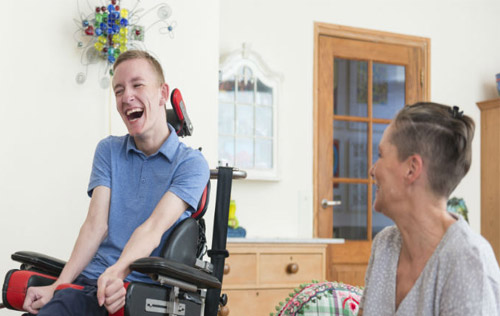
Examples of ILO scenarios
Living by yourself
Living on your own is highly dependent on your disability and your specific needs, but it is possible with the right combination of support workers and informal supports around you. Individuals who wish to live by themselves can rent or own a home or apply for a house provided under Specialist Disability Accommodation. The types of support available to you, if you live on your own, will be dependent on your circumstances. However, it might be common if you live on your own to have one or two primary support workers who stop by every day or regularly. These support workers will help with specific tasks that you require assistance with, such as cleaning, driving you to appointments, or even cooking. To supplement your support, you may also have an informal support network of friends or family who visit or help with other tasks. Safeguards such as emergency calls and welfare checks by support workers are also highly encouraged.


Living with a host
NDIS participants can apply to live with a host. A host can be an individual or a family not related to the participant who wishes to have an NDIS participant residing with them. The host is compensated from the participant’s NDIS funds and takes over the role of the primary support person. The support requirements for living with a host will be highly dependent on the needs of the participant. A host ILO can suit participants who have both high and moderate levels of needs. Finding a host doesn’t need to be complicated. An NDIS participant can utilize their current networks or look for a host through a registered provider.
Living with housemates
A housemate ILO is an excellent option for NDIS participants who want to live with other people. A housemate’s ILO can be a great way to form a community that supports you and your needs whilst gaining greater independence. This arrangement can include living with a primary career who does receive compensation for their services and support within privately rented, owned, or even SDA options. Living with a housemate might also mean living with friends or flatmates who are not primary careers or NDIS participants. Depending on individual circumstances, this option suits all spectrum of needs, from low to high levels of care.
How to apply for ILO?

- Applying for Individualized Living Options takes part in two steps that require two different types of funding.
- Suppose you and your local Area Coordinator (LAC) or Support coordinator think you may be a candidate to receive an Individualized Living Option. In that case, you will need first to fill out a home living and requests form, which can be found on the NDIS website
- You can submit this form during your annual plan review or during your current plan if your circumstances have changed.
- When thinking about and planning your ILO, it's essential to take a holistic view of your circumstances and needs. Take into consideration all of your current support networks and ask yourself how they might be able to help in your living arrangements and identify what gaps are still there.
- Based on the request form and your initial ideas of how an ILO may work for you, the NDIA will approve funding for a support coordinator or a housing expert to work with you to design an ILO to suit your specific needs. The exploration and design process of your ILO application is done by local service providers who specialize in ILO cases and can help you identify and refine your housing plans.
- The NDIA will want to see clear evidence that your support needs are being met and that you can work towards your goals, live independently, self-catering, and participate in the community. You may also need to provide evidence or letters of support for your interest in your ILO. If the NDIA is happy that your ILO is reasonable and necessary and is good value for money, they will approve funding to put your housing plan into practice.
- Over time, as your needs change and you receive more or less support from your supports and network, you will need to update the NDIA about what is happening with your ILO at your annual plan review.
Short Term Accommodation
What is short term accommodation?
Short Term Accommodation or STA is a service provided by the NDIA for up to 14 days to participants who may want or need alternative housing for a short period. STA is not used in the case of emergencies but is more of an opportunity to grow and achieve goals whilst also providing respite for careers. STA allows for participants the chance to experience different living arrangements, make new friends, develop new skills and interact with another community. STA can also be used for respite, where an NDIS stays in temporary accommodation to give their primary careers a break from their duties. Respite is a way to support careers and support workers by offering breaks that allow people to rest and recharge their batteries. It can help them keep up with their regular work schedule, minimize the time they need to take care of participants, up-skill themselves, or even get out and do something different.
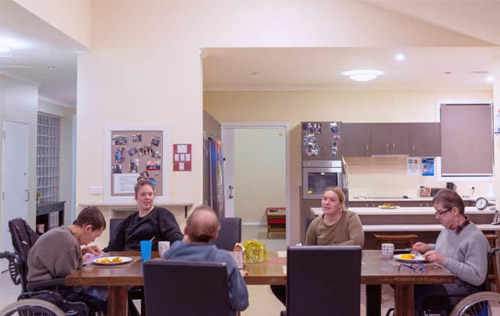
The NDIS can provide up to 28 days a year of short-term accommodation, which you can use flexibly. You may want to take the maximum length of 14 days in one block twice a year or perhaps break it into weekends or even days spread over the year. It’s up to you as long as it’s reasonable and necessary and related to your disability.
Common Scenarios where STA is used
- One or more of your primary support workers/ carers are unavailable
- You need to take a break from your accommodation for a short period of time or to get out of your current environment
- You have changed your living arrangements, and the NDIA has approved it
- Your regular supports such as carers/home care workers can’t be available at short
- You want to interact with a new community
- You want to gain greater independence through making new friends outside your current support network
- You have a study or work opportunity elsewhere
Who is eligible, and how to apply?
If you are an NDIS participant, you are eligible for respite care funding that comes out of your core support budget. However, Short Term Accommodation provisions that relate to other parts of your plan – goals, lapses in accommodation etc. need to be approved by the NDIS and deemed reasonable and necessary.
When setting your goals for your NDIS funding, if you include things like “I want to build independence from my established support network” or “I want to be able to give my primary support a few days off each month”, you are more likely to be approved for STA funding.
Ask your support coordinator or LAC to find out how STA funding might be suitable for your plan.
Medium Term Accommodation
What is medium-term accommodation?
Medium Term Accommodation or MTA is a type of funding provided by the NDIA for NDIS participants who may need more complex or longer-term accommodation than short-term accommodation can provide. Funding can be provided for up to 90 days of accommodation to support NDIS participants while they wait for a long-term housing solution to become available for them to move into. The NDIA will require anyone applying for MTA to have evidence of a long-term housing solution being available before funding will be approved.
Typical scenarios where people receive MTA funding are
- Modifications to an existing home are being made
- Specialist Disability Housing is becoming available
- Assistive technology is being prepared or delivered
- Support persons are unavailable for the moment
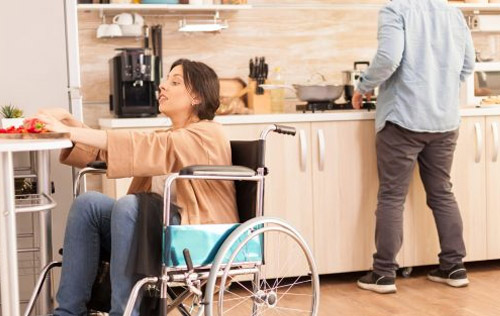
Who is eligible for MTA, and how to apply?
A Medium-Term Housing solution is only available if you are awaiting a more permanent solution and can show that funding is reasonable and necessary. Because MTA funding is tied to your disability, the NDIA will not provide funding because your housing situation has occurred for other reasons unrelated to your disability. If you are unsure of whether or not you may be eligible for MTA funding, speak to your support coordinator or your local area coordinator for more information.
Conclusion
The NDIS is changing the way people with disabilities live their lives, receive care, and how they choose their homes. Choice and control are what the NDIS can provide, and housing through the NDIS is all about providing the best possible housing solution for individuals, based on their needs, goals, and the support networks available to them. The NDIS is still relatively new, and it will take time for the new types of disability housing promised to become available to everyone who needs it. Specialist Disability Housing has the potential to transform lives and deliver a home that even 5-10 years ago would have been impossible through technology and modern design practices. Independent Living Options open the doors for people to live with greater choice and control over what they want from a home and who they want to share it with. Supported Independent Living provides a level of care for those who need it most whilst constantly improving their lives through high-quality in-home care and ensuring that the recipient will always remain in control. The housing solutions for people living with a disability in Australia are as unique and varied as those who receive them. And the NDIS is taking great strides in giving the choice and control firmly in the participant’s hands. For more housing resources and information, contact My Care Plan Manager today.

